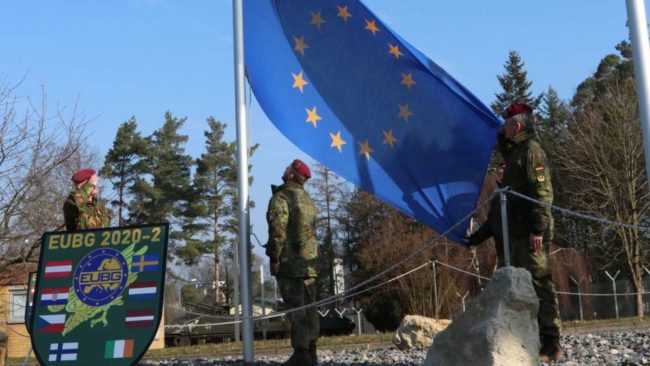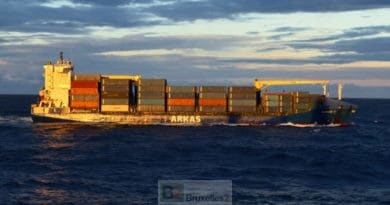Rapid Reaction Force. An idea, far from being revolutionary. A little boldness please
(B2) Europe, like NATO for that matter, still does not have a rapid reaction force worthy of the name. There are many devices—the NRF in NATO, the battlegroup in the EU—that sit idle, wear out, and are in fact fake: neither reactive, nor fast, nor forceful.

Good ideas, but...
We have just carefully read the latest proposal put on the table, at the initiative of Germany, to provide the Union with a rapid reaction force read: Strategic compass. Five countries offer a more efficient rapid reaction force).
A beautiful paper...
Un non paper (as we say in Brussels jargon, i.e. an unofficial document) with ideas for solving the current shortcomings of the battlegroups, by giving them a certain permanence, by investing in the missing capacities, by providing the EU with a command platform worthy of the name, etc. However, this proposal has a major flaw.
We try to make something new with the old
It is only one more avatar of the desire to conceptualize a rapid reaction force in a fairly theoretical way. It focuses on a few related notions, technical in a way, without resolving the hiatus between the speed and suddenness of a crisis, on the one hand, and the slowness of European reaction at the politico-military level (1). Forecasting a first operational capability in 2025, and a full capability by 2027-2028, as the authors of this paper do, is a utopia.
Incredibly slow to set up
Almost ten years to set up a new model is condemning it to being quickly outdated. We are going to do it again like the previous models: starting from the last (failed) crisis. As was the Helsinki 60.000 force (1999) — based on the rigid Bosnian UNPROFOR-SFOR model of 1995 — or the battle group — designed on the model of the intervention of EUFOR Congo — which took five years to be modeled and has never been able to go beyond the stage of gentle exercises in muddy fields. Will the first entry force (French, 5000 men), designed on the model of the Barkhane force, and the rapid reaction force be more suited to the new future situation?
The various main problems remain unanswered
How to crystallize the decision more quickly at the highest European level, in 24 hours maximum? (a European Security Council?) How to quickly obtain, within 24 hours, the necessary national authorizations? (Negotiate some sort of prior authorization?) How to foresee the unforeseen crisis? (Imaginative planning?) How to adapt the military response to a future crisis that will resemble neither the Sahel nor Afghanistan? (A modular response?) etc
A congenital error
This document always starts from the same principle. It presupposes that Europeans want et are able to intervene. And this, quickly. But this is false.
be more realistic
There are crises where we don't want to, or we can't intervene, at least frontally. There are many examples: the Russian intervention in Crimea 2014, the Syrian civil conflict of 2012, the Azerbaijan-Armenia war of 2020, the Ethiopian civil war of 2021, etc. This finding is just as valid for NATO. Conversely, there are crises, where even if we haven't really considered it, we will be forced to intervene. In particular for the evacuation of citizens in danger - such as the withdrawal from Kabul in Afghanistan recently or during the tsunami in the Philippines - or against a terrorist group.
Reverse the Paradigm
Finally, there are crises where we want and we can intervene: defense of European territory, medium-intensity conflict in the neighborhood, or further afield, with a weak force opposite (such as maritime piracy, the Sahel, etc.). It would perhaps be wise to adapt the principle of realism, to start from each of these typologies of crises, where intervention is obvious, and then build one (or more) instruments and a mechanism for decision-making. Rather than doing the opposite. And having a totally unusable instrument.
Invent the battle groups moderns
Because modern military intervention today, is it always to have a capacity of a land brigade, as the authors of this paper suggest? Maybe. But this will surely not respond to all crises. Shouldn't we have a commando force of 100 to 300 men, to carry out interventions (rapid evacuation and extraction type), equipped with air capabilities (strategic, tactical aircraft and helicopters) or maritime (depending on the case)? Shouldn't we have a battalion of drones rather than an armored company?
In the end, wouldn't a team of 20 to 40 geeks, in jeans and trainers (or in suits and ties), able to thwart a computer attack or respond quickly, be more useful? And dissuasive? This is perhaps where the battle group from the future...
A little audacity what the devil!
(Nicolas Gros-Verheyde)
- The Euro-Atlantic system is no more reactive, cf. withdrawal from Kabul


